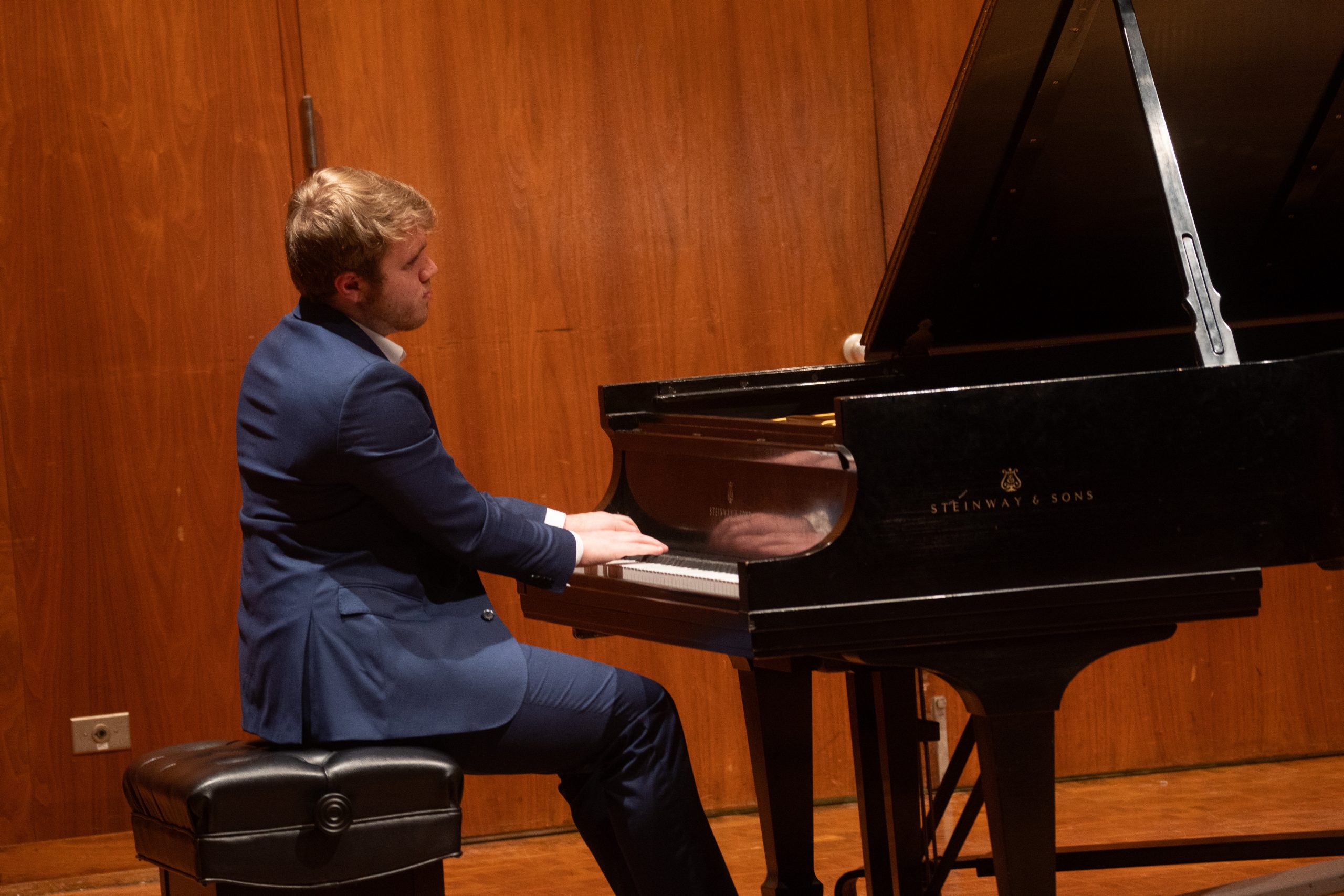It’s that time of year again—the recital rush of Spring Term. During the past week, Lawrence University’s Harper Hall hosted the recitals of three student pianists. Featured were senior Ami Hatori, junior Nathaniel Tang and fifth-year Ben Johnson.
On Wednesday, April 5, Hatori —a student of George and Marjorie Olsen Chandler Professor of Music Catherine Kautsky—began her recital with Johann Sebastian Bach. Featured was Bach’s “Prelude and Fugue in F-sharp Major” from book one of “The Well-Tempered Clavier.” An intricate set, she offered a gentle opening to prelude and masterfully balanced the subsequent fugue’s splotches of fast-moving counterpoint.
Hatori next engaged in Ludwig van Beethoven’s “Piano Sonata No. 18 in E-flat Major,” known commonly as “The Hunt” for its inclusion of hunting horn call–like passages. With a laid-back approach throughout, she consistently delivered thoughtful phrasing. Given her quick choice in tempo, the last movement was particularly impressive.
For her next work, Hatori played “Chaconne” by Sofia Gubaidulina, a living Russian composer. The composition was essentially a loose theme and variations, but of considerable dissonance throughout. Hatori’s performance heavily emphasized the work’s frequent dynamic and rhythmic contrasts, offering a satisfying differentiation.

After a heartfelt expression of gratitude to her friends, family and mentors—especially Kautsky—Hatori began Frédéric Chopin’s “Ballade No. 4 in F minor.” A work of profound expression, Hatori’s performance fittingly matched this character. The pacing, control and pure artistry of the final few minutes were hugely memorable.
Tang, another student of Kautsky, performed a single-piece program for his recital on Friday, April 7. But this was no light music: it was Johannes Brahms and his monumental “Variations and Fugue on a Theme by Handel.” Featuring an initial elegant theme from the Baroque composer George Frideric Handel, what followed were 25 variations of hugely diverse content.
An earlier work of Brahms, the composition has attracted substantial praise since its inception. Tang remarked to the audience that even the composer Richard Wagner, a fierce critic of Brahms’s purportedly “conservative” style, commented that “one sees what still may be done in the old forms when someone comes along who knows how to use them.”
For a set with such high technical and interpretive demands, Tang showed remarkable virtuosity. The exuberant final variation contained so much excitement that it could have been the entire performance. Better yet, the slower variations were approached with careful transitions, as to offer cohesivity to the set’s sometimes haphazard tempo changes.
Most impressive may have been Tang’s endurance: the 30-minute piece was played without interruption. Afterwards, Tang was not finished; he concluded with a short piece by Baroque composer François Couperin as his encore. Entitled “Les Barricades Mystérieuses” (“The Mysterious Barricades”), the gentle work served as comforting conclusion to the program.
For his recital on Saturday, April 8, Johnson toured five cornerstones of piano repertoire. A student of Associate Professor of Music Anthony Padilla, Johonson also began with a set from “The Well-Tempered Clavier,” the “Prelude and Fugue in G minor” from Bach’s second book. The prelude included a lilting, French overture–like texture, while the faster fugue featured a theme with the same note repeated seven times.

The four-movement “Piano Sonata No. 11” by Beethoven followed. Here, Johnson delivered exactly what each movement required: technical excellence in the first, subtle lyricism in the second, a playful third movement and continuous energy in the restless finale.
After a brief intermission, he broke into Chopin’s “Étude Op. 25, No. 11.” Nicknamed “Winter Wind” for its tumultuous nature, Johnson adopted a quick tempo of considerable virtuosity to resounding success.
Maurice Ravel’s Impressionistic “Jeux d’eau” was next, a musical expression of the poetic excerpt inscribed on the score, the “river god laugh[s] at the water that tickles him.” Played with grandeur and speed, Johnson was careful to bring out the touching harmonies and dissonances throughout.
As a fitting end to his impressive program, Johnson embarked on “Rondeau fantastique sur un thème espagnol ‘El Contrabandista’” by Franz Liszt, an infamously difficult composition. Johnson noted that Liszt himself often ended his own recitals with the work.
The difficulties of Liszt’s “El Contrabandista” are innumerable. To name a few: lightning-quick leaps, huge scales, arpeggios, tricky ornaments and fast, repeated notes, among many more. Despite its demands, Johnson’s interpretation featured remarkable clarity and precision.

